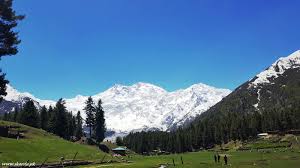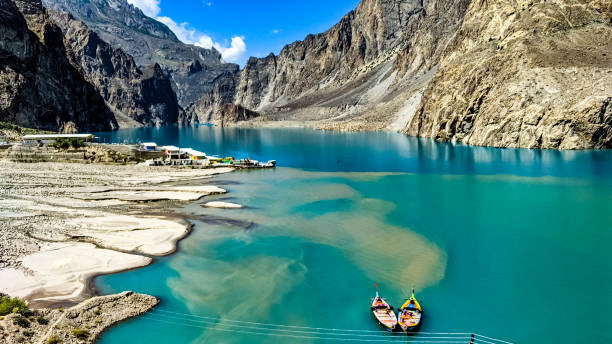
About the Gilgit
The Jewel of the North
Nestled in the heart of the Karakoram Range, Gilgit is one of Pakistan’s most stunning and strategically significant regions. As the administrative capital of Gilgit-Baltistan, it serves as a gateway to some of the world’s highest peaks, including K2, and offers an unparalleled blend of natural beauty, cultural richness, and historical depth. With its rugged mountains, serene valleys, and hospitable people, Gilgit attracts adventurers, nature lovers, historians, and cultural explorers alike.
Geographical Setting
Gilgit lies in the northernmost part of Pakistan, flanked by towering mountain ranges: the Karakoram, the Himalayas, and the Hindu Kush. These mountains are not just scenic backdrops—they shape the region's climate, culture, and accessibility.
The Gilgit River, which flows through the city, eventually joins the mighty Indus River. The valleys in this region are fertile, and many small streams and tributaries support local agriculture. Despite its remoteness, Gilgit is linked to other parts of Pakistan through the Karakoram Highway (KKH)—often dubbed the Eighth Wonder of the World. This highway connects Gilgit with major cities like Islamabad and continues into China via the Khunjerab Pass.
A Brief History
Gilgit's history stretches back thousands of years. It has been a crossroads of cultures, empires, and religions. The region was once a key stop on the ancient Silk Road, facilitating trade and cultural exchange between Central Asia, China, and the Indian subcontinent.
From Buddhist pilgrims in the 1st millennium AD to Muslim rulers in later centuries, Gilgit has seen a dynamic cultural evolution. Notable are the Buddhist rock carvings and petroglyphs found in places like Hunza and Chilas, testifying to a time when the region was a major center of Buddhist learning and art.
In more recent history, Gilgit became part of the princely state of Jammu and Kashmir under Dogra rule. After the Partition of British India in 1947, local forces and residents staged a rebellion against the Dogra rulers and declared their accession to Pakistan. Since then, Gilgit has been administered as part of Gilgit-Baltistan, a region with semi-autonomous status in Pakistan.
Cultural Diversity
Gilgit is home to a mosaic of ethnic groups and languages. Among the most prominent ethnic groups are the Shina, Burusho, Wakhi, and Balti people. Languages spoken include Shina, Burushaski, Wakhi, Balti, and Urdu, which serves as the lingua franca.
Religion also plays an important role in Gilgit’s society. The population is predominantly Muslim, with Sunni, Shia, and Ismaili communities coexisting. This diversity often reflects in local festivals, architecture, and daily life.
The people of Gilgit are known for their warmth and hospitality. Traditional dress, folk music, and dances like the Alghani and Dumyal showcase a rich cultural heritage passed down through generations.
Tourist Attractions
Gilgit is a dream destination for trekkers, mountaineers, and nature enthusiasts. Some of the region’s major tourist attractions include:
1. Hunza Valley
Located north of Gilgit, Hunza is arguably the most famous valley in the region. Surrounded by snow-capped peaks like Rakaposhi and Ultar Sar, Hunza offers scenic beauty, historical sites like Baltit Fort and Altit Fort, and a serene environment. The local people, mostly Ismaili Muslims, are known for their progressive views on education and community development.
2. Naltar Valley
About 40 km from Gilgit, Naltar is known for its pine forests, colorful lakes, and ski slopes. In winter, it becomes a haven for skiing enthusiasts and hosts national ski competitions.
3. Fairy Meadows
Although technically closer to Chilas, many tourists visiting Gilgit also make the trek to Fairy Meadows. It offers stunning views of Nanga Parbat, the world’s ninth-highest peak. The lush green meadows and wooden cabins create a fairy-tale atmosphere.
4. Karakoram Highway (KKH)
A marvel of engineering, the KKH is not just a road but an adventure in itself. Driving on this highway offers views of dramatic landscapes, including glaciers, rivers, and steep mountain cliffs.
5. Deosai National Park
Although it’s closer to Skardu, Deosai is often visited from Gilgit. Known as the ‘Land of Giants’, Deosai is one of the world’s highest plateaus, rich in flora and fauna, including the Himalayan brown bear.
Economic Importance
Gilgit’s economy is primarily based on agriculture, tourism, and trade. The fertile valleys produce crops such as wheat, barley, apricots, cherries, and apples. The region also supports animal husbandry and handicrafts.
Tourism, however, has emerged as a major economic driver. With better infrastructure and increased media coverage, more domestic and international tourists are discovering Gilgit’s charm. Trekking, camping, paragliding, and cultural tourism are all contributing to the region’s growth.
Gilgit also plays a vital role in the China-Pakistan Economic Corridor (CPEC), as the corridor passes through Gilgit-Baltistan into China. This has led to increased investment in roads, power generation, and communication networks in the region.
Challenges and Opportunities
Despite its beauty and potential, Gilgit faces several challenges. Political ambiguity remains a sensitive issue. While residents have representation in local governance, Gilgit-Baltistan is not officially a province of Pakistan, which limits its political rights under the national constitution. There have been calls for full provincial status or enhanced autonomy.
Infrastructure, though improving, still lags behind. Many remote areas lack reliable healthcare, education, and connectivity. Harsh winters and landslides often cut off access to key regions.
However, the opportunities are immense. Sustainable tourism, eco-agriculture, education, and clean energy initiatives can transform Gilgit into a model for development in mountainous regions. Government and NGO-led projects are already helping local communities harness these opportunities.
Conclusion
Gilgit is far more than a picturesque destination—it's a region of great cultural depth, strategic significance, and human resilience. From the ancient Buddhist carvings to the snow-capped peaks of the Karakoram, every part of Gilgit tells a story. As Pakistan continues to explore its northern frontier’s potential, Gilgit will undoubtedly remain at the heart of that journey, a beacon for all who seek adventure, peace, and inspiration in the high mountains of the north.
Address: RX3M+27F







